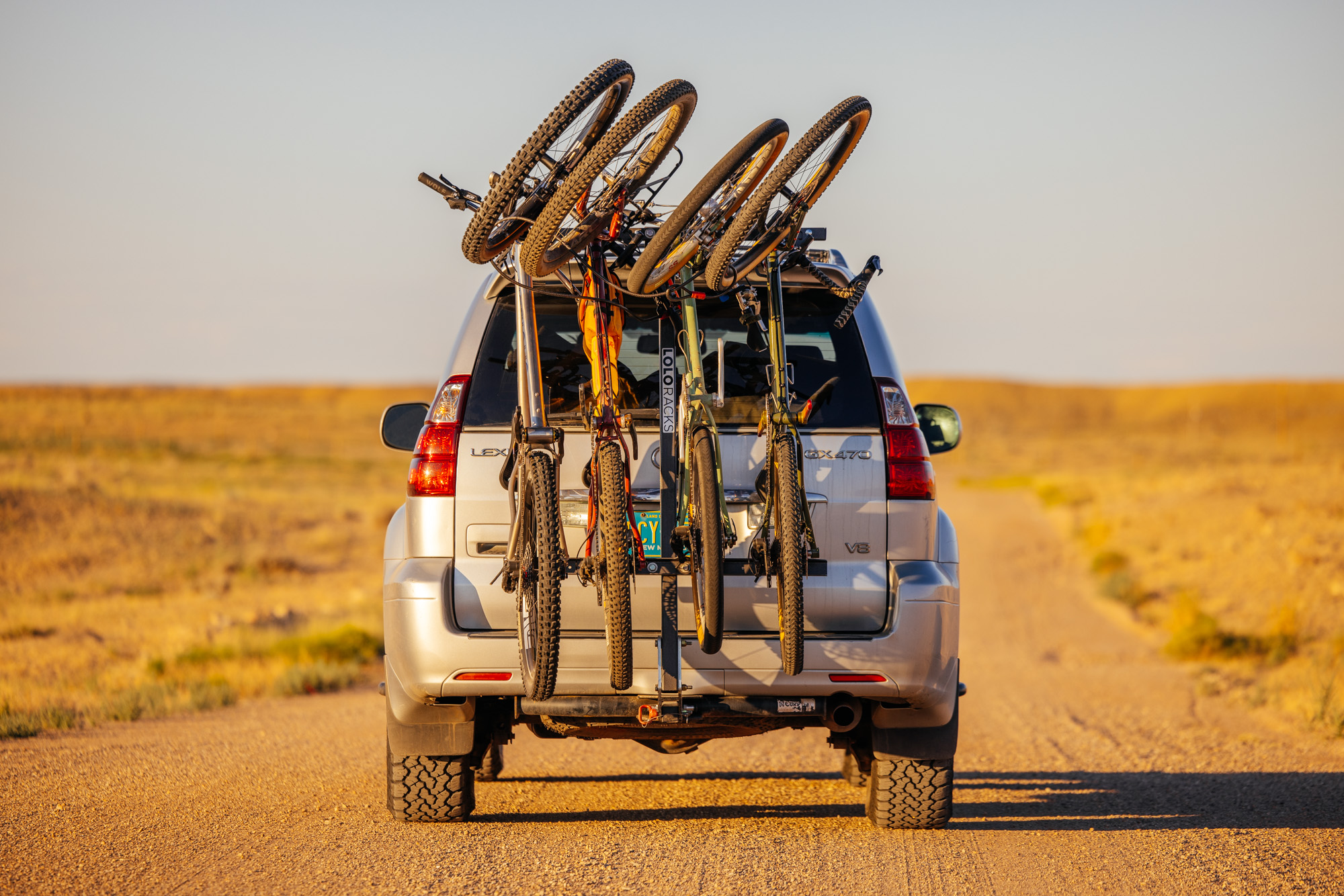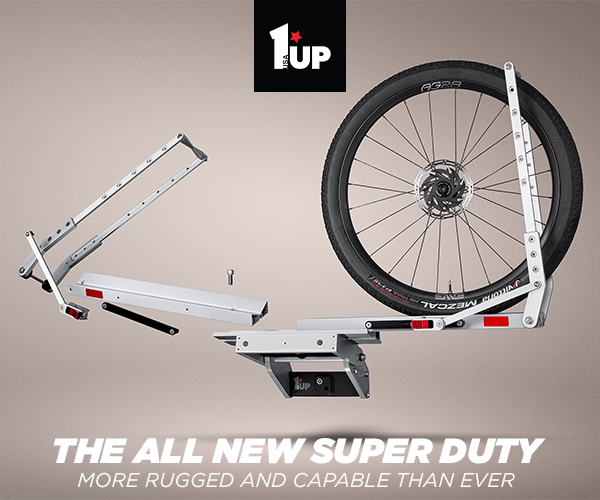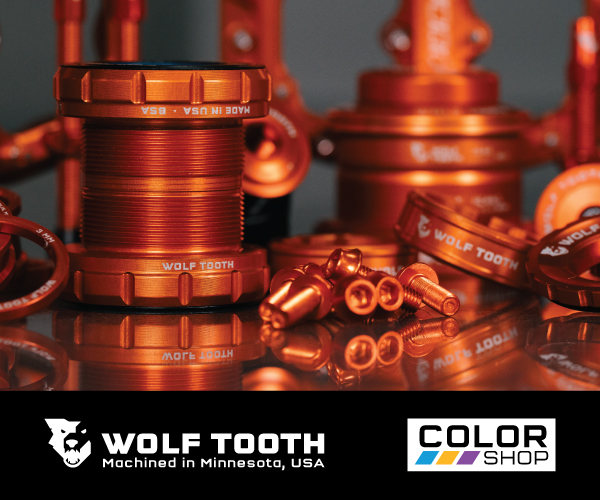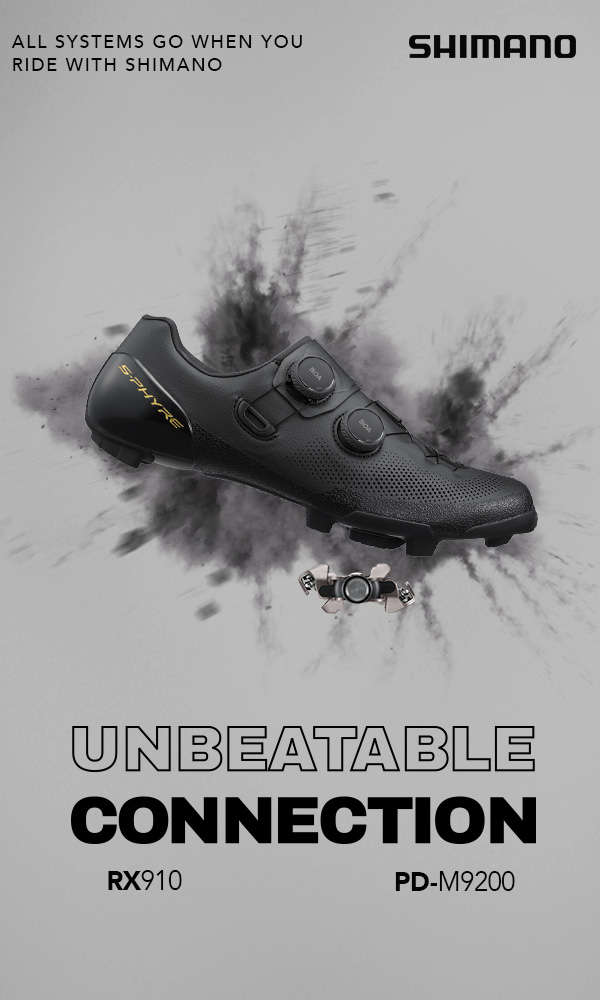John and Cari have been using their Lolo Racks four-bike rack ($799/$1025) for over three years on road trips throughout the American West. These made-in-Oregon bike racks are unique in that they carry bikes by the handlebars. This solves a few problems while presenting others. Read on for John’s thoughts on this modular and adaptable system…

Lolo Racks
Lolo Racks began in Portland, Oregon, in 2016, when they were looking for a better way to carry their bikes deep into the mountains on weekend camping trips. Unlike other vertical racks that carry bikes from the front wheel, the Lolo Racks is composed of hooks that grab hold of your handlebars. Lolo designs and manufactures everything in-house using US-made steel and hardware.


For stability, you drop your bike into the rubber-coated hooks, placing the stem in between each hook, allowing the rack hooks to hold the bike handlebars. The rear wheel rests on the lower load bar. For security, you wrap the shock/bungee cord ball around and lash it to the slotted hanger.



The brand offers two configurations. There’s a 60″ wide 6-bike rack option that weighs approximately 71 pounds and a narrower, 39″ wide, 4-bike rack that weighs approximately 64 pounds. Which model capacity you choose depends on the types of bikes you carry. I bought the four-bike rack based on our needs.

One thing to note is that bikes in the Lolo Rack will have their front wheels spin, so I run a cable through all the wheels and then use a u-lock to both secure the bikes when we stop for breaks and keep the wheels from spinning while driving. Some people prefer to clamp the front brake levers, too.

Four or Six Bike Capacity
The handlebar hooks on the Lolo Racks are angled, allowing for the bikes to be staggered across the back of the rack. It’s easiest to load bikes from smallest to largest, right to left. If all you haul are mountain bikes, you needn’t worry about anything else. If you want to haul adult and kids’ bikes, there are no compatibility issues either.

Drop Bars and Flat Bars Fit (Sort Of)
However, if you also want to haul road or other drop bar bikes, this requires wider spacing to prevent handlebar interference with adjacent bikes. While I’ve found it’s ok to carry one drop bar bike, loaded on the far right, with a smaller flat bar bike next to it, Lolo advises customers to order the six bike rack if a customer needs to fit four drop bar bikes.
Lolo also makes a four-bike special wide rack, specifically for carrying four drop-bar bikes.
All this to say:
- You can carry at least two MTBs and two road bikes at the same time on the six-bike rack.
- You can put at least two MTBs and one road bike on the four-bike rack.


Loading a Lolo Racks
Loading the rack is easy, depending on how tall your vehicle is and how tall you are. For instance, Cari can load her bike onto the rack, but it takes her a bit of effort. Meanwhile, myself or Miguel have no issues loading the rack. However, loading an e-MTB or e-Cargo bike can be quite the ordeal, so it’s best to ask for help. Start from the right and load on the bike, then secure the bars and rear wheel with the bungee shock cords.


Lolo Racks Modularity
If you’ve found you should have ordered a six-bike rack instead of the four, Lolo makes a kit to convert your existing rack. They even sell their hooks separately, allowing you to fab up your own rack by attaching it to L-track, Molle panels, or other cargo carrying solutions. Every piece of hardware is replaceable, down to the bungees and lower load bar.




2″ Receiver Hitch and Standard Tilt
Because of the load being carried, Lolo only makes racks for 2″ receivers. Each rack comes with a standard anti-wobble hitch wedge hardware pack and detailed instructions on how to load the rack. Personally, I can load it myself, but depending on your back strength, you may want an extra set of hands. When you assemble the rack, if you find you need more clearance from the back of your vehicle to say, your saddles, there are three mounting positions for the main vertical rack bar. We used the one that tilts the bikes closest to the back of the car.

For the first two years, we used Lolo’s standard tilting bike rack. This relies on a hitch pin to keep the rack from pivoting downward, falling aft of the vehicle. This system is incredibly stable while driving, but it can take two people to safely lower the rack if you have rear barn doors or a hatchback. When using this tilting feature with our car, which has a large barn door, we have to drop it all the way down to access the back cargo area.
If you don’t require that much clearance, you can place the pin back in one of the holes and it will keep the rear wheels off the ground.



Foot Activated Tilt
Last year, Lolo sent out the Foot-Activated Tilt kit to retrofit our rack. Following along with Lolo’s YouTube instructions (I, too, dropped a pesky bolt!) I retrofit our rack and haven’t looked back. By using some simple hardware and common bolts, with special cut-outs in the steel plates, you can lower the rack into other positions and drop it down completely. With bikes loaded, they’ll rest on their rear tires. Without bikes, the rack upper will touch the ground.

This is a game changer for road trips where you might not have bikes on the rack all the time, but still want to access the rear of your vehicle.

Lolo Racks Off-Road Stability
First of all, we always obey the posted speed limits on dirt roads. And yield to other users, giving uphill traffic the right of way, and slowing to a crawl for cyclists, equestrians, and pedestrians. If the car appears to be moving fast in this photo, it’s because it was shot with a very slow shutter speed.

In terms of gravel roads and semi-rough doubletrack, the Lolo Rack offers a very stable haul. Since the security of the rack is reliant on your hitch, it’s paramount to ensure your tow hitch is rated to whatever tongue weight of your loaded bike rack. The max total load (bikes and or gear) on the rack is 220 pounds, which is a Class II tow hitch, and only the two center hooks are rated for 50 lbs. The other, outer hooks are rated for 39 lbs. If you’re going to haul e-MTBs, Lolo recommends removing the batteries prior to loading.
That said, we have a Class II hitch on our car, and the Lolo Rack has been incredibly stable when loaded down. Yet, I wouldn’t take the rack on any gnarly 4×4 trails due to the loss of exit angle.

Exit Angle Loss
Exit or departure angle is the angle at which the rear wheels and bumper of your car can go down an incline. It’s easy to see here. If you were to draw an imaginary line from the rear contact patch on the back car’s tire to the underside of the bike’s tires, it’s a very acute angle because the rear wheel sits out quite far. Our car has a stock height but has slightly bigger tires than factory spec, and I replaced the rear airbags with coil springs so it sits a bit higher for hauling a load. But even so, the measurement from the bike’s rear tire to the ground is only 18″.
On our car, I measured the exit, or departure angle, with the rack at 14º and without the rack at 26º, depending on how much the rear is sagging from vehicle load.
This means if you are traveling on a road with deep ruts or ledges larger than 18″, there’s a good chance you’ll smash the rear wheels. Even with lots of 4×4 off-road experience, I wouldn’t ever take a rack like this on a moderate 4×4 trail.

Three Years of Use, Zero Issues
We don’t shuttle MTBs at all with this car, and the Lolo Rack sits in the backyard, uncovered and exposed to our harmful UV rays when it’s not on the back of the car. I’d say we use this rack maybe only a handful of times each year, and only on long-distance road trips like driving to and from the MADE Bike Show in Portland or to Lost and Found. We don’t use e-MTBs and usually only haul one drop bar bike. For us, it’s been an ideal solution for this road trip vehicle.
On my other 4×4, the Troopcarrier, I cannot use the Lolo Rack due to the unknown load limit of my tow bar and the interference with my spare tire carrier and gas bottle holder. Even with Lolo’s extension that clears most spare tires, the Troopy’s bumper sticks out too far. If you do shuttle you and your friends, or go on road trips with a family who rides, the Lolo Bike Rack is a great way to carry four or six MTBs. If you want to carry a gravel or road bike, there are ways to do so, but other racks do make this easier with their stock configurations.
Pros
- Super stable with 2″ receiver anti-wobble hardware
- Four or six bike hauling
- Pricing is reasonable, considering this is a US-made product
- Supporting niche US-manufacturing is rad!
- The foot-activated tilt is a game-changer
- Hardware is all replaceable/rebuildable via common hardware stores
- Modular and customizable depending on use case
- Bikes don’t rub (while I recommend removing pedals)
- The foot-activated lever allows for ease of access
- Lolo’s swingout looks burly and allows the rack to be swung away from the vehicle.
- Made in the USA
Cons
- Adds to overall vehicle height (for cars and small SUVs)
- Hard to load bikes for shorter riders on bigger vehicles
- Exit angle sacrifice
- Doesn’t work well with some spare wheel carriers or off-road bumpers with swingouts
- Clamps can mess up bar tape
- Finagling drop and flat bars takes patience
Check out more at Lolo Racks.
Review disclaimer: I purchased my Lolo Racks four-bike rack at full retail but was sent the foot-activated tilt for free with zero obligations…









